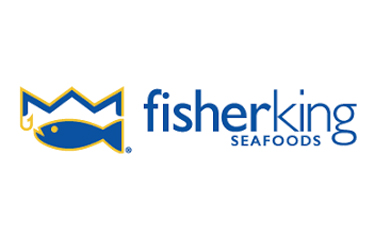Halifax, Nova Scotia, Canada-based Fisher King Seafoods is having another banner year on strong demand for its marquee snow crab and lobster products.
Fisher King CEO Tor Conklin told SeafoodSource the company is projecting USD 260 million (EUR 230.5 million) in sales for the year, topping its previous all-time high of USD 226 million (EUR 200.4 million) set in 2018.
“We expect to have our best year ever in 2019, with sales over USD 140 million [EUR 124.1 million] year-to-date,” Conklin said.
With the Canadian snow crab season almost over, as most of the larger fishing zones close by the end of June, Conklin was able to reflect on the season and declare it a success for the company.
“Demand has been strong for the entire season, even as prices have climbed from USD 8.00 [EUR 7.09] per pound to USD 8.65 [EUR 7.67] per pound over the past eight weeks for the most prevalent size, 5- to 8-ounce clusters,” he said. “We believe the strong demand for 5- to 8-ounce clusters results from a combination of a shortage of carry-over inventory at the start of the season as well as efforts on the part of retailers to promote 5- to 8-ounce sizes over 8- to 10-ounce sizes, given the price differential of approximately USD 2.00 [EUR 1.77] per pound at the beginning of the season.”
Conklin said the company will have a fuller picture of profits from the tail-end of the season once the remaining 10 percent of the Canadian quota is landed and processed, which will happen over the next four to five weeks, he said. But as was the case with this season, Conklin said he doesn’t expect much of the crab caught this season to be held onto.
“There are very few processors or marketing companies planning to hold product beyond the season, which we expect will cause prices to edge up higher over the next few months,” he said.
Similarly to the snow crab market, the spring lobster season also started with very little carry-over of 2018 meat and tails, Conklin said. That, plus ever-increasing demand from Asia, have pushed prices higher.
“With the strong demand for whole cooked and live lobster from Asia, particularly China, and the overall worldwide demand for lobster products, we expect prices for lobster meat and tails will continue to edge up over the next few months,” he said.
Larger lobster tails are so hard to find on the open market that many foodservice operators have been forced to use two four-ounce tails instead of one eight-ounce tail for their entrees, Conklin said.
“With only one week left in the Canadian spring fishery, we are finding sales brisk and inventories tighter than expected for this time of year. Larger tail sizes of six to seven ounces [and] up remain extremely short and have been distributed on an allocation basis for the past four to five months,” he said. “While all sizes are selling well, we have found a strong demand for three- to four-ounce and four-ounce tails to the retail sector.”
Conklin said his company – which also sources wild-caught scallops, cold-water shrimp, ocean perch, and turbot – has improved its positioning in the seafood market through a number of expansionistic moves, including adding staff and improving customer service. During 2018, Fisher King Seafoods added three new people to its sales team, bolstering the Fisher King Seafoods USA office in Essex, Massachusetts, which opened in June 2017. The Massachusetts office has experienced dramatic sales growth, while providing improved access to and oversight of the company’s stored product in the Boston area, according to Conklin.
Additionally, Fisher King has widened its sourcing to make it less dependent on solely Canadian fisheries, Conklin said.
“We have strengthened our crab supply base from around the world, which has added over two million pounds of crab from new sources, primarily arriving after the Canadian crab season has closed,” Conklin said. “We continue to improve our position within the lobster category with sales growth for lobster products pushing 40 percent year-over-year. Meanwhile, we are constantly adding to our core shellfish line as well as marketing more finfish and sushi items, many of which are sourced through our strong partnership with Nichirei Fresh Inc.”
Nichirei Fresh Inc., a subsidiary of frozen seafood conglomerate Nichirei Corp., bought a 25 percent stake in the company and it remains an equity partner, though Conklin and Fisher King President Mark Powell each upped their stakes in the company to 45 percent each after buying back 15 percent of the company from Nicherei in September 2018.
“We continue to have a strong relationship with Nichirei,” Conklin said at the time. “Both companies are focused on the continued growth of the business together and the overall success of each company. They fully supported our decision to buy back shares.”
North America remains Fisher King’s largest sales region, but the company continues to increase sales and procurement internationally, Conklin said.
“We added 70 new customers to our base over the past 12 months,” he said. “We expect steady growth for the near future as a result of increased supply opportunities, additions to our sales team, and a steadily expanding customer base.”
The company is also looking at potential acquisition opportunities.
“To strengthen our market position and financial metrics, Fisher King is exploring vertically integrated investment opportunities including processors, marketing firms, and companies serving the supply chain sector,” Conklin said.







